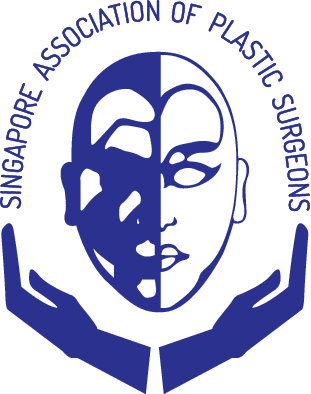FACIAL PARALYSIS
Author: Dr Wong Manzhi
The facial nerve is the nerve that controls movement of the muscles of the face. It is divided into five main branches which are responsible for important facial functions such as lifting of the eyebrows, eye closure and smiling. Paralysis results in severe impairment of the function and appearance of the face. In addition, taste sensation to the front of the tongue and tear production can be affected.
The facial nerve originates in the brain and exits the skull below the ear, passing through the parotid salivary gland as it divides into branches that enter the facial muscles.
Facial paralysis can thus occur for a variety of reasons when the nerve is injured or interrupted along its course. These include salivary gland tumors, brain tumors, trauma or infections. It can also occur in children due to congenital abnormal development of the facial nerve.
Even after recovery from facial paralysis, disorganized regeneration of the nerve can lead to troubling sequelae such as unwanted co-contractions of the muscles.
BELL'S PALSY
Bell’s palsy is the leading cause of facial paralysis. The nerve becomes inflamed and swollen within its tight canal and is unable to function. This may be caused by a virus. There is some evidence that the culprit is often herpes simplex virus (HSV), the same virus that causes cold sores and genital herpes. Other viruses may also cause the condition, including herpes zoster virus, cytomegalovirus, and Epstein-Barr virus. Both genders and all races are affected equally; however diabetes and pregnancy increase the risk of developing Bell’s palsy.
Patients generally report being suddenly unable to move their face, with symptom onset over 48-72 hours.
PAROTID GLAND AND BRAIN TUMORS
These are the other main causes of facial nerve paralysis. Acoustic neuroma is the most common type of brain tumor involved. It is a benign (non-cancerous) growth that occurs on the eight cranial nerve which lies adjacent to the facial nerve. The eight nerve carries hearing information and balance signals from the ear to the brain. Symptoms of an acoustic neuroma include hearing loss, tinnitus (perception of noise ringing in the ear) and vertigo (spinning sensation). A hearing test and MRI can establish the diagnosis and the tumor may require removal by a neurosurgeon.
The facial nerve divides into branches as it passes through the parotid salivary gland which lies just in front of the ear. Some or all of the facial nerve branches can be involved by malignant (cancerous) tumors of the parotid gland and may need to be removed together to ensure tumor clearance.
The treatment approach to facial paralysis in tumor cases depends on the findings during the operation. A conservative approach is prudent if the surgeon who performs the tumor removal feels that the nerve was saved during the operation. Patients will require eye care and sometimes temporary surgical procedures on a case-by-case basis. If the nerve was cut during the operation or if the facial palsy does not resolve, then a more active approach must be taken.
NERVE RECONSTRUCTION
If one or more facial nerve segments needs to be removed, they can be reconstructed using nerve grafts harvested from other areas of the body. This can be done either in the immediate setting (at the same time as the removal of the tumor) or as early as possible (within 3-6 months is preferable).
The nerve grafts can be connected to the same side facial nerve, or if this is not available, to the healthy side facial nerve or to the nerve to the masseter muscle (one of the muscles for chewing). As nerves regenerate at a speed of 1mm/day, between 6-12 months may be required before the nerve reaches the muscle and is able to activate it again. Radiation therapy may slow the speed of nerve regeneration and affect the final muscle strength achieved. In addition, fibrosis of the surrounding tissues will result in a tightness and contracture.
If more than 18 months has elapsed from the time of onset of facial nerve paralysis, the facial muscles would usually have atrophied and spontaneous recovery cannot be expected. Replacement of muscle function using functional muscle transfer is the ideal solution to allow the patient to smile again.
SMILE RECONSTRUCTION
Other Procedures
There are 17 muscles of facial expression on each half of the face. Smiling is just one of the functions of the face. For example restoration of brow position with brow lift techniques can reduce skin hooding that obscures vision and also improve appearance. This can be accomplished either by endoscopic techniques or by direct brow lift (which will leave a hairline scar above the brow). As eye closure can be impaired leading to dry eyes and tearing, definitive eyelid reconstruction such as with levator recession or gold/platinum weight may be needed. The lower eyelid can be tightened with techniques such as limited tarsorraphy, canthopexy/canthoplasty or inferior retractor recession.
